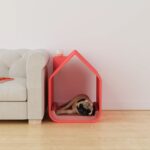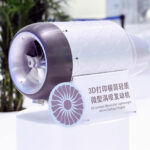With all the advances in bioprinting, there are distinct limitations most researchers are facing. Even with advanced organ recreations like a functional 3D printed miniature heart, there is still the issue of producing faster and in high volumes. UC Berkeley researchers may have found a possible solution in multi-layer cryolithography. With a new device, they employ parallel bioprinting of organ tissue and assembling the organs with freezing. As a result, it even aids in the preservation process, as the “cryo” in the name suggests, using freezing temperatures after the layers merge.
The process allows for the development of bones, various tissues and organs. Rather than stacking up layers in traditional additive manufacturing manner, the device operates a little differently. The researchers call it multilayer cryolithography because it uses 2D layers first, and then requires assembly into 3D objects at a different station using cold temperatures and the merging mechanism. As the video shows, a robotic arm transports each layer once it is complete and stacks them together separately.
Aside from developing organs, the team also believes this method could allow for foods with novel textures. This could be important for the senior population, who may have trouble swallowing due to medical complications. These textures could aid patients with dysphagia, allowing for foods that melt in the mouth and provide nutrients more easily.
Advantages of Multilayer Cryolithography
One of the main advantages in cryolithography is in its use of a colder process. This aids immensely in tissue preservation, while also being great for bonding cells. This same aspect could make it applicable to the industrial-scale manufacturing of frozen foods.
“Right now, bioprinting is primarily used to create a small volume of tissue. The problem with 3D bioprinting is that it is a very slow process, so you can’t print anything big because the biological materials will deteriorate by the time you finish. One of our innovations is that we freeze the material as it is being printed, so that the biological material is preserved, and we can control the freezing rate,” said Boris Rubinsky, professor of mechanical engineering and co-author of the paper.
Another advantage of cryolithography systems is that they account for the difficulties of printing biological matter. Though most 3D printed objects are rigid items like thermoplastics, bioprinting is often about hydrogels and liquids. This makes the production of biological materials far trickier, especially for large volumes. Thus the printers work on combinations of hydrophilic and hydrophobic surfaces that allow for the transport of the 2D layers as the arm moves it regardless of the gravity conditions.
Featured image courtesy of UC Berkeley.










